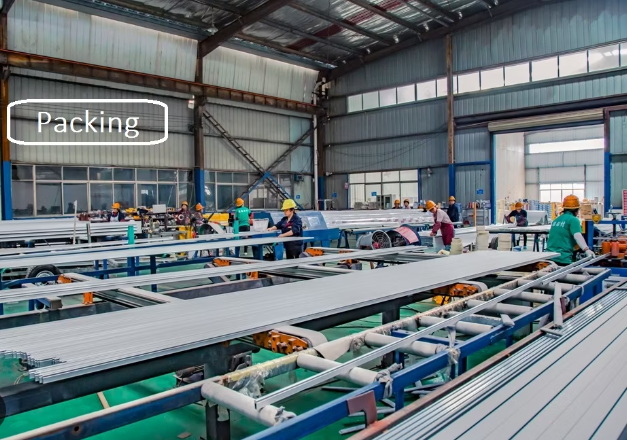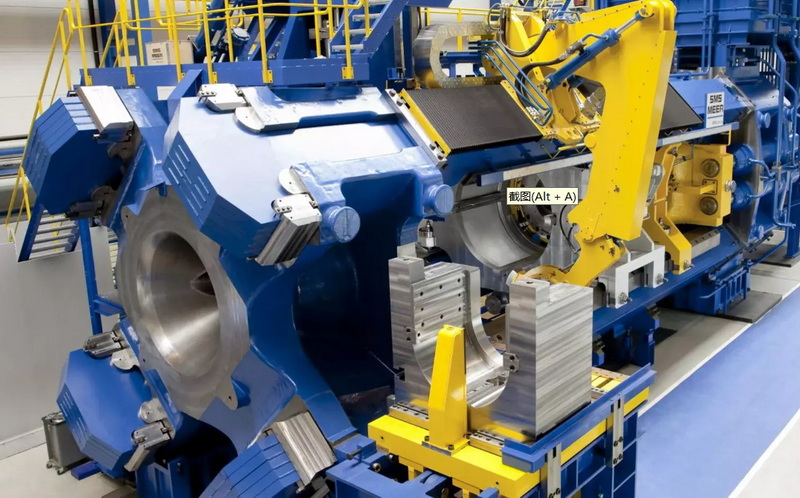Content Menu
● Introduction to Corrugated Pipe Extrusion Machinery
● Industries Using Corrugated Pipe Extrusion Machinery
>> 1. Construction Industry
>> 2. Agricultural Sector
>> 3. Automotive Industry
>> 4. Telecommunications and Power Distribution
● Benefits of Using Corrugated Pipe Extrusion Machinery
● Technical Specifications of Corrugated Pipe Extrusion Machinery
>> Table: Technical Specifications of PE Corrugated Pipe Making Machine
● Advancements in Corrugated Pipe Extrusion Technology
>> Advantages of Modern Corrugated Pipe Extrusion Lines
● Sustainability and Environmental Impact
>> Environmental Benefits of Corrugated Pipes
● Market Trends and Future Developments
>> Impact of Emerging Technologies
● Case Studies: Successful Applications of Corrugated Pipe Extrusion Machinery
>> Benefits of Real-World Applications
● Conclusion
● FAQ
>> 1. What Materials Are Used for Corrugated Pipes?
>> 2. How Does Corrugated Pipe Extrusion Machinery Work?
>> 3. What Are the Advantages of Using Corrugated Pipe Extrusion Machinery?
>> 4. What Are the Common Applications of Corrugated Pipes?
>> 5. How Does the Choice of Material Affect the Use of Corrugated Pipes?
Corrugated pipe extrusion machinery plays a pivotal role in various industries due to its ability to produce flexible, durable, and versatile pipes. These pipes are used in applications where strength, resistance to corrosion, and adaptability to complex environments are crucial. In this article, we will explore the industries that utilize corrugated pipe extrusion machinery and the reasons behind their widespread adoption.

Introduction to Corrugated Pipe Extrusion Machinery
Corrugated pipe extrusion machinery is designed to manufacture pipes with corrugated surfaces, which enhance their flexibility and resistance to external pressures. The process involves extruding plastic materials such as PE, PP, PVC, and PA through a die to form the corrugated shape. This machinery is essential for producing pipes used in drainage systems, cable protection, and construction projects.
Industries Using Corrugated Pipe Extrusion Machinery
1. Construction Industry
The construction industry heavily relies on corrugated pipes for drainage systems, sewage networks, and cable protection. Their flexibility allows them to adapt to complex terrain and underground conditions, reducing the risk of pipe rupture. Additionally, corrugated pipes are lightweight and easy to transport, making them ideal for large-scale construction projects.
2. Agricultural Sector
In agriculture, corrugated pipes are used for irrigation systems due to their durability and resistance to environmental factors. They can withstand the pressure of water flow and are resistant to chemicals and fertilizers used in farming, ensuring a reliable supply of water to crops.
3. Automotive Industry
Automotive manufacturers use corrugated pipes for threading and wiring due to their flexibility and resistance to abrasion. These pipes protect electrical cables from damage caused by vibrations and movements within vehicles, ensuring reliable electrical connections.
4. Telecommunications and Power Distribution
Corrugated pipes protect power and communication cables from external damage and erosion, ensuring reliable service delivery. They are used in underground cable networks to safeguard against environmental factors such as moisture and temperature fluctuations.
Benefits of Using Corrugated Pipe Extrusion Machinery
- Efficiency and Speed: These machines automate the production process, significantly reducing manufacturing time and increasing efficiency. Modern extrusion lines can produce pipes at speeds up to several meters per minute, depending on the material and pipe size.
- Environmental Sustainability: They are environmentally friendly, reducing energy consumption and material waste. Advanced cooling systems and energy-efficient motors contribute to lower operational costs and a reduced carbon footprint.
- Cost-Effectiveness: By minimizing manual labor and reducing scrap, these machines lower production costs. The use of high-quality materials and precise manufacturing processes ensures that the final product meets stringent industry standards, reducing the need for rework.

Technical Specifications of Corrugated Pipe Extrusion Machinery
Corrugated pipe extrusion machinery typically includes components such as single or double screw extruders, corrugating dies, cooling systems, and cutting machines. The choice of machinery depends on the type of material and the desired pipe specifications. For example, PE and PP pipes require different extrusion temperatures and pressures compared to PVC pipes.
Table: Technical Specifications of PE Corrugated Pipe Making Machine
| Model | Pipe Diameter (mm) | Production Speed (m/min) | Production Capacity (kg/h) | Total Power (kw) |
| SJ45/33 | 10~32 | 6~8 | 40 | 20 |
| SJ45/33 | 25~50 | 6~8 | 70 | 30 |
| SJ55/33 | 25-63 | 5-6 | 80 | 45 |
| SJ65/33 | 25-110 | 4-5 | 120 | 60 |
Advancements in Corrugated Pipe Extrusion Technology
Recent advancements in corrugated pipe extrusion technology have focused on improving production efficiency and product quality. Innovations include high-speed water cooling systems, which enhance cooling efficiency and reduce production costs by allowing for continuous operation without significant downtime. Additionally, the development of non-platform corrugators simplifies the process of changing molds for different pipe sizes, making production more flexible and efficient.
Advantages of Modern Corrugated Pipe Extrusion Lines
- Increased Production Speed: Modern extrusion lines can increase production speed by up to 40% compared to older models.
- Improved Cooling Systems: Advanced cooling systems, such as pressure water cooling, enhance pipe quality by ensuring consistent cooling throughout the production process.
- Enhanced Flexibility: The ability to quickly change molds allows manufacturers to produce a wide range of pipe sizes and types, catering to diverse industry needs.
Sustainability and Environmental Impact
Corrugated pipe extrusion lines are designed with sustainability in mind. They utilize eco-friendly materials and incorporate energy-saving features to minimize carbon footprint and operational costs. By employing cutting-edge co-extrusion technology, manufacturers can produce pipes that not only are structurally robust but also offer superior hydraulic efficiency, reducing energy consumption during fluid transfer and providing significant cost savings to end-users.
Environmental Benefits of Corrugated Pipes
- Reduced Material Usage: Corrugated pipes require less material than traditional pipes, reducing waste and conserving resources.
- Longer Lifespan: Their resistance to corrosion and abrasion extends their lifespan, reducing the need for frequent replacements and associated environmental impacts.
- Energy Efficiency: The hydraulic efficiency of corrugated pipes reduces energy consumption in fluid transfer applications, contributing to lower operational costs and environmental benefits.
Market Trends and Future Developments
The market for corrugated pipe extrusion machinery is expected to grow due to increasing demand from infrastructure projects and the need for sustainable solutions. Future developments will likely focus on integrating advanced technologies such as AI and IoT to optimize production processes and improve product quality. Additionally, there will be a greater emphasis on using recycled materials to enhance sustainability.
Impact of Emerging Technologies
- Artificial Intelligence (AI): AI can optimize production parameters and predict maintenance needs, reducing downtime and improving overall efficiency.
- Internet of Things (IoT): IoT sensors can monitor production in real-time, allowing for immediate adjustments to ensure consistent product quality.
- Recycled Materials: The use of recycled plastics in corrugated pipes will become more prevalent, reducing waste and supporting circular economy initiatives.
Case Studies: Successful Applications of Corrugated Pipe Extrusion Machinery
Several companies have successfully integrated corrugated pipe extrusion machinery into their operations, achieving significant improvements in production efficiency and product quality. For example, a leading construction materials supplier increased its production capacity by 30% after upgrading to modern corrugated pipe extrusion lines. Another company in the agricultural sector reduced its irrigation system maintenance costs by using durable corrugated pipes that resisted corrosion and abrasion.
Benefits of Real-World Applications
- Increased Production Capacity: Upgrading to modern machinery can significantly boost production capacity, meeting growing demand from various industries.
- Reduced Maintenance Costs: The use of durable corrugated pipes in applications like irrigation systems reduces maintenance needs, saving resources and enhancing operational efficiency.
Conclusion
Corrugated pipe extrusion machinery is indispensable across various industries due to its ability to produce high-quality, flexible pipes efficiently. Its applications span from construction and agriculture to automotive and telecommunications, highlighting its versatility and importance in modern infrastructure development.

FAQ
1. What Materials Are Used for Corrugated Pipes?
Corrugated pipes are typically made from materials like Polyethylene (PE), Polypropylene (PP), Polyvinyl Chloride (PVC), and Polyamide (PA), each offering different properties such as flexibility, strength, and resistance to corrosion.
2. How Does Corrugated Pipe Extrusion Machinery Work?
The machinery works by extruding plastic materials through a die to form the corrugated shape. The process involves heating, extruding, corrugating, cooling, and cutting the pipe to the desired length.
3. What Are the Advantages of Using Corrugated Pipe Extrusion Machinery?
The advantages include increased production speed, reduced labor costs, improved product quality, and environmental sustainability by reducing waste and energy consumption.
4. What Are the Common Applications of Corrugated Pipes?
Common applications include drainage systems, cable protection, agricultural irrigation, automotive wiring, and construction projects.
5. How Does the Choice of Material Affect the Use of Corrugated Pipes?
The choice of material affects the pipe's durability, flexibility, and resistance to environmental factors. For example, HDPE pipes are highly durable and flexible, making them ideal for underground applications.






















